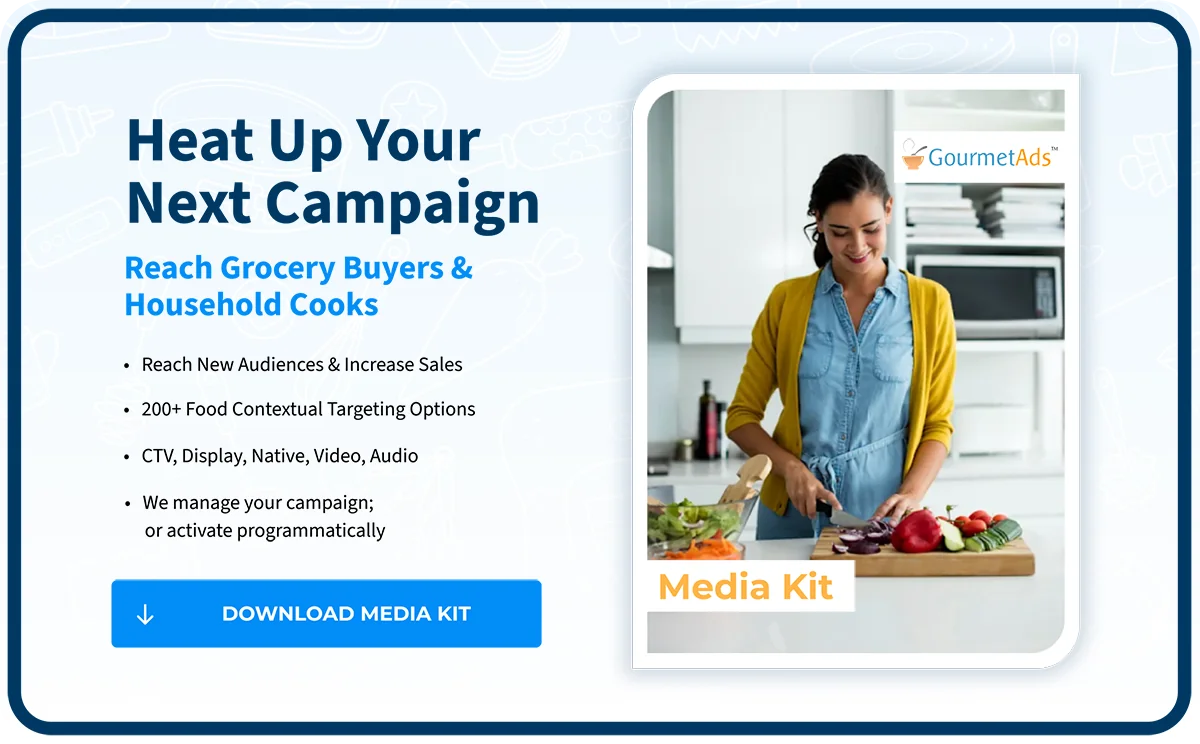Programmatic Advertising B2B
Programmatic Advertising for B2B is a fairly new concept. A lot of digital marketers don’t have a solid grasp on programmatic marketing, specifically how it can be used in the B2B space. We’re here to clear that up.
In order to understand how programmatic advertising works in the B2B marketing space, you first need to know what programmatic advertising is and how it works.
Programmatic Advertising
Programmatic advertising is an automated way of delegating ad exchanges. Essentially, the digital ad market is ruled by ad exchange and the transactions that go into these ad exchanges. During an ad exchange, publishers are looking to sell their digital real estate space, and advertisers are ready to buy that space to display their ads.
Programmatic Real Time Bidding Definition
Programmatic Real Time Bidding (RTB) is a popular type of programmatic advertising. It enables advertisers to bid on ad impressions in real time via an auction-based system. The programmatic method uses AI, machine learning, and an advanced algorithm to purchase and optimize digital advertising campaigns in real time. Programmatic advertising uses automated technology to create quick and efficient transactions during an ad exchange. This is all done through real time bidding (RTB). During RTB, Advertisers use a programmatic Demand Side Platform (DSP) to buy ad spaces.
With DSP, advertisers can bid on and manage multiple ad exchanges with one platform. On the contrary, publishers use a programmatic Supply Side Platform (SSP) to hold, manage, and sell digital ad space. The SSP communicates with the ad exchange, which then communicates with the DSP to complete a transaction in real-time. And in between all of this is a programmatic Data Management Platform (DMP). Similar to a filing cabinet, a data management platform houses user data. Showing advertising to users who have seen at least five pages about a particular subject is one example.
Programmatic buying has become famous due to its ability to place highly relevant advertisements. Advertisters use it for ad space inventory. These digital ads can easily capture the ideal target audience. Whether you use native ads or video ads, programmatic campaigns will help you to get qualified leads. It identifies ad fraud by utilising machine learning algorithms that aid in the identification of fraudulent click activities.
What is Programmatic Direct?
With Programmatic Direct, publishers will negotiate individual contracts in advance with advertisers to provide impressions at a set cost. Although the actual process of providing advertisements to consumers is still carried out by an automated system, just like other B2B programmatic media buying models.
What Does Programmatic Mean in Advertising?
Programmatic in advertising is the distribution of ads without any human involvement. Programmatic relies solely on automated technology and live data.
You may be wondering, how does this fit into B2B marketing? To gain a better grasp on how programmatic can be used for B2B, it’s important to understand programmatic advertising techniques. Setting all of the technicalities aside, and looking solely at the purpose of programmatic advertising, can give marketers a better idea of how B2B and programmatic can mix. So to simplify things, we can define programmatic advertising as the real-time buying and selling of ads through automation.
Marketers receive 1st party data from the details customers reveal and the activities they perform through an organization’s digital touchpoints. All of the data is centralised on the customer data platform. The business may provide advertisements, content, and experiences that are tailored to a person’s interests by using 1st party data (digital interactions, purchase history, behaviour, preferences, etc.).
There are several ways to do programmatic advertising. Contextual targeting is one of such technique. Display advertisements that are placed on websites that are specifically related to the product being advertised are said to be contextually targeted. As a result, the information in the advertisement is pertinent to the information on the website or page. Native advertising is an amazing way to advertise your products in programmatic advertising. Managers can view native advertising examples to understand how native advertising can help them in their campaign goals.
Marketing vs Advertising is a decades-old debate and many brands are confused about the use of programmatic in them. Your methodology and technique make you eligible to use it for both marketing and advertising purposes.
In order to serve relevant adverts, contextual advertising searches through websites and content for keywords. The first form of advertising that takes the user experience and context into account is contextual advertising. Native advertising, which is intended to blend in with the surrounding material, and behavioral advertising, which targets people according to their preferences, are other forms of contextual advertising.
Does Programmatic Advertising Work for B2B?
When it comes to programmatic advertising in the B2B marketing world, there are various ways that it can be used. For starters, we mentioned above that programmatic advertising can be used to target exactly the right audience at exactly the right time. As a B2B marketer, the advanced targeting technology of programmatic can be used to precisely target your digital marketing efforts to the audience you’re looking to reach.
In programmatic account-based marketing, marketing team collaborates with sales team to discover a large number of accounts (hundreds or thousands) and devise novel strategies to promote at scale. Heavy analytics and audience targeting analyses are required, but may be completed by a small team.
So to cut to the chase, yes – programmatic advertising does work for B2B.
Why does Programmatic Advertising work in B2B Marketing?
Almost all programmatic DSPs use an ad exchange system. These advertisements communicate with specific programming ASPs, so publishers can also use them as partners. Tell me the situation where we are working at an IT firm that offers low-code software to the Chief Information Officer (CEO). The ideal consumer audience in this market is unlikely to come from certain publishers, such as publishers who publish graphic content. Programmatic advertising can be implemented in both paid social campaigns and paid search.
What are Examples of Programmatic Advertising in B2B Marketing?
For B2B marketers programmatic can be used to purchase ad space, and optimize those ads. What this looks like to a B2B marketer is a self-sufficient B2B digital marketing campaign. Many advertisers, for example, utilise programmatic social media platforms such as Google Ads and Facebook Ads on a daily basis.
B2B marketers can use programmatic to effectively target accounts with campaigns. Here are a few ways marketers can do so:
● Target cold prospects
● Target accounts in the consideration/conversion stage
● Target current customer accounts with with cross-sell or upsell offers
● Target customers you’re looking to retain
What are Programmatic Advertising Platforms?
At the core of programmatic advertising, are programmatic advertising platforms. These platforms are the technology behind the automated process.
A programmatic advertising platform is used to automate the transaction and management of digital ad campaigns for publishers and marketers. This platform handles digital media space buying, ad placement, real-time ad performance tracking, and optimization of ad campaigns.
Programmatic advertising platforms offer management tools for both publishers and marketers. When using a programmatic advertising platform, publishers and marketers not only access a more efficient way of buying and selling ad space, they also give themselves access to a variety of tools that can be used to optimize and enhance adss/inventory.
Benefits of Programmatic Ads for B2B marketers:
B2B marketers can save big on their advertising budget by utilizing a programmatic advertising platform. When using a programmatic advertising platform for B2B marketing campaigns, B2B marketers not only save money, but time as well. The power of programmatic allows for greater transparency in the ad exchange process, as well as better ad efficacy.
Programmatic ad buying has taken a prominent place in digital ad spend. It has become a preferred place for digital advertisements. Programmatic algorithms help companies in lead generation because they can target audience easily. For both business to business and business to consumer companies, programmatic targeting offers key benefits.
Businesses can do highly targeted advertisements through this technology. You simply have to deal with one platform. Advertisers may control all of their digital ads from a single platform. You no longer need to manage your advertising across many platforms such as Google, LinkedIn, and Facebook.
The targeting options, together with time and money savings, are the main factors that make programmatic advertising effective in B2B marketing when you’ve chosen the correct DSP. CRM and marketing systems integration Marketo, Hubspot, and Salesforce are just a few examples of marketing platforms that can be integrated with a DSP using solutions that are currently on the market. This allows you to offer consumers ads depending on their activity in your marketing system.
Native advertising is an excellent approach to promote compelling content via programmatic. Native advertisements that are strategically positioned drive B2B decision-makers to your content, generating trust and pushing them down the marketing funnel.
Benefits of Real Time bidding for B2B
Real time bidding help advertisers to target ads for B2B. Buying and selling ads have become easy and it helps in B2B marketing. Businesses get more qualified leads due to real time bidding. They can work without data providers because their online advertising has been managed by programmatic buying. Advertisers can use a programmatic DSP to bid on and manage various ad exchanges from a single platform. All of this happens in real time. Programmatic audio platforms place ads based on real-time audience data and employ compelling advertisements to improve the user experience.
The bottom line is that programmatic advertising certainly fits into the B2B marketing space. Not only that, but it’s also a very powerful tool when used intentionally with B2B marketing.
Is Programmatic Advertising worth it?
Using programmatic ads as an incredibly effective tool can be incredibly beneficial. It’s a major draw back of the automation in advertising for advertisers. Programmmatic advertising is the most cost effective option. This makes up more than 93% of display advertising spending in the UK.
Most DSPs demand roughly $100,000 in media spend per month, however engaging with a programmatic agency can provide you with DSP technology at considerably lower marketing spend investment levels.
How to run a B2B programmatic campaign?
The process of running an effective campaign is complex and takes a lot of time to develop a lead-generating campaign and ensure it is the right product to market. Let’s take each step and dive deeper.
Display ads for B2B businesses
Display advertising is the most common form of B2B programmatic advertising. Display advertisements enable the user to combine visual elements with text, allowing communication with complex solutions. Its maximum size is 300250.
Advertising with confidence
It can only be trusted if the business can look at the programmatic black box. Embracing programmatic purchases makes advertising easier and more reliable with respect to your brand and industry. Having a solid plan for your B2B programmatic ad buying strategy will help you succeed in the programmatic realm.
Programmatic Advertising Resources
- A Guide to Programmatic Advertising
- Does Programmatic Advertising Work?
- How to Get Started with Programmatic Advertising
- Programmatic Advertising 101
- Programmatic Advertising for Food Brands
- Programmatic Advertising for Wine Brands
- Programmatic Advertising for Supermarkets
- Programmatic Advertising is the Future
- Programmatic Advertising Landscape
- Programmatic Advertising Metrics
- Programmatic Advertising Pros and Cons
- Programmatic Advertising Trends
- Programmatic Advertising Types
- Programmatic Advertising and Machine Learning
- Programmatic Advertising vs Managed Service
- Programmatic Advertising Without Cookies
- Programmatic Guaranteed
- Programmatic Marketing
- Programmatic Reports
- The Benefits and Drawbacks of Programmatic Advertising
- What is Programmatic Advertising?
- When did Programmatic Advertising Start?
Let’s Get Started !
Let the Gourmet Ads team walk you through all the options available to ensure that your Food, Supermarket, Beverage or Kitchen advertising campaign has the best possible combination of Premium Guaranteed Inventory, Scale, First Party Data, Contextual Targeting and Programmatic Advertising elements.







